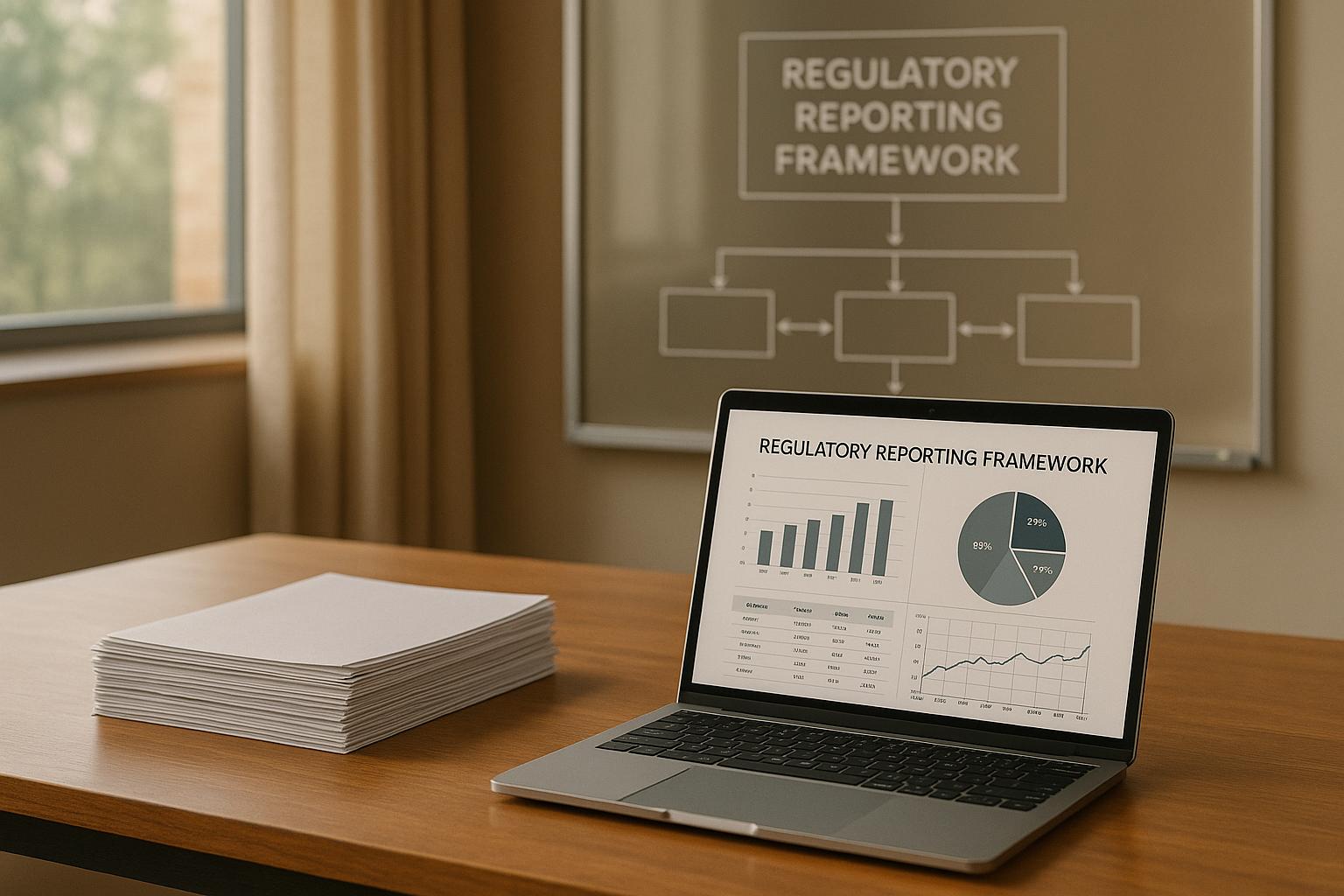Top AI Tools for Financial Risk Management 2025

Managing financial risk has become faster and more precise with AI tools that analyze data in real time. These platforms reduce losses, improve decision-making, and make complex risk strategies accessible to businesses of all sizes. Key tools include:
- Finbox: Simplifies financial data analysis with real-time metrics for smarter investment and risk evaluation.
- Sift: Detects fraud instantly by analyzing transaction patterns and user behavior.
- MindBridge: Flags anomalies and assigns risk scores for audits and compliance.
- HighRadius: Automates credit risk management and optimizes cash flow.
Each tool offers unique features like integration with existing systems, real-time processing, and automated workflows. While implementation challenges like data quality and regulatory compliance exist, advancements in AI, such as Graph Neural Networks and Explainable AI, are paving the way for better financial stability.
Quick Comparison:
| Tool | Focus | Key Features | Best For |
|---|---|---|---|
| Finbox | Data Analysis | Real-time metrics, customizable dashboards | Investment & benchmarking |
| Sift | Fraud Detection | Real-time alerts, user-friendly interface | E-commerce security |
| MindBridge | Anomaly Detection | Risk scoring, compliance automation | Audits & regulatory needs |
| HighRadius | Credit Management | ERP integration, cash flow optimization | Credit reviews & cash flow |
AI is reshaping financial risk management with tools that are faster, more precise, and accessible to businesses of all sizes.
Top AI Tools for Financial Risk Management in 2025
AI-driven tools are transforming financial risk management by equipping mid-market businesses with smarter ways to assess and mitigate risks. With machine learning, real-time analytics, and automated workflows, these tools provide tailored solutions for everything from data analysis to fraud detection. Here's a closer look at some standout tools and how they can enhance modern risk management.
Finbox: Advanced Financial Data Analysis
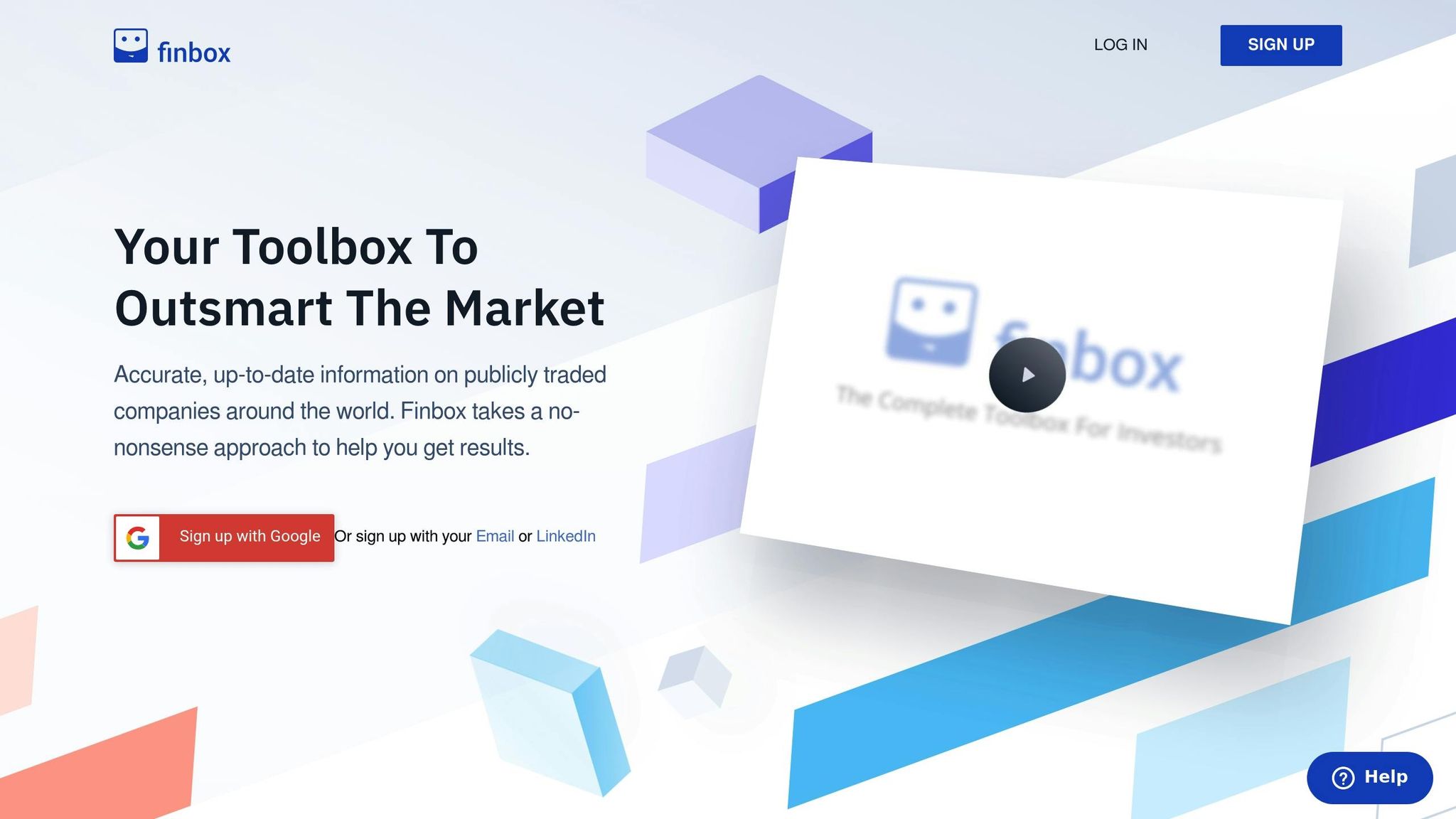
Finbox is a powerful financial data platform offering over 1,000 customizable metrics to analyze publicly traded companies. It simplifies complex financial data, making it easier for businesses to gain actionable insights - even without a dedicated data science team.
What sets Finbox apart is its real-time analytics, which support smarter investment decisions, risk evaluations, and competitive benchmarking. For U.S. businesses, Finbox aligns its insights with local reporting standards and market trends. Its customizable dashboard allows users to track industry-specific metrics tailored to their unique risk profiles. Plus, its seamless integration with existing financial systems minimizes setup time, enabling quicker decisions in fast-changing markets.
Sift: Fraud Detection in Real Time
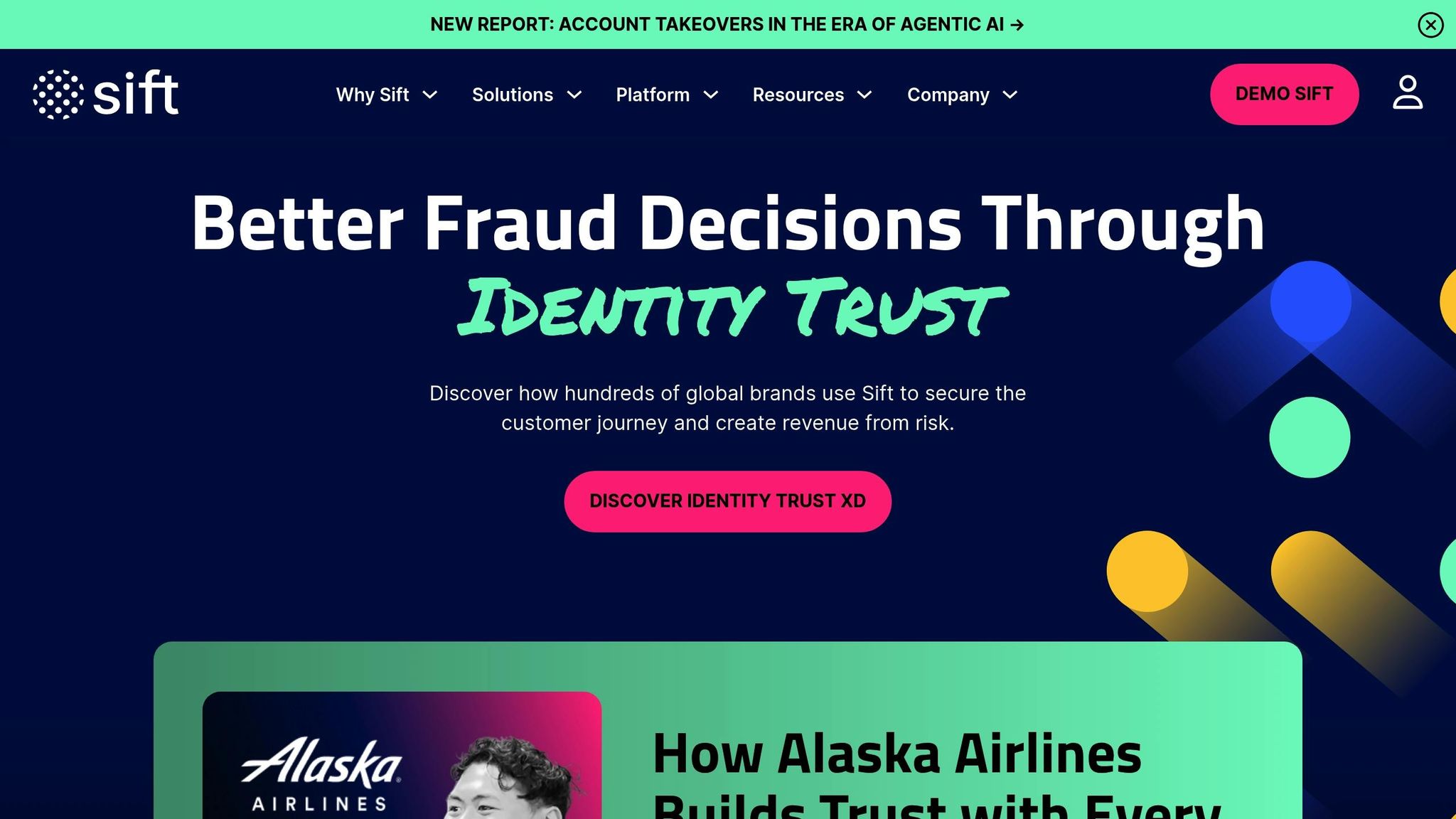
Sift leverages machine learning to detect and prevent fraud by analyzing transaction patterns and user behaviors. Its real-time processing ensures that suspicious activities are flagged immediately, allowing businesses to act before any damage is done.
The platform integrates smoothly with major U.S. financial systems and CRM tools, creating automated workflows for security and centralized risk monitoring. This not only helps prevent financial losses but also builds customer confidence - key for businesses managing sensitive data. Sift’s user-friendly interface provides clear visualizations and actionable alerts, making it accessible for teams without deep technical expertise.
MindBridge: Spotting Anomalies and Scoring Risks
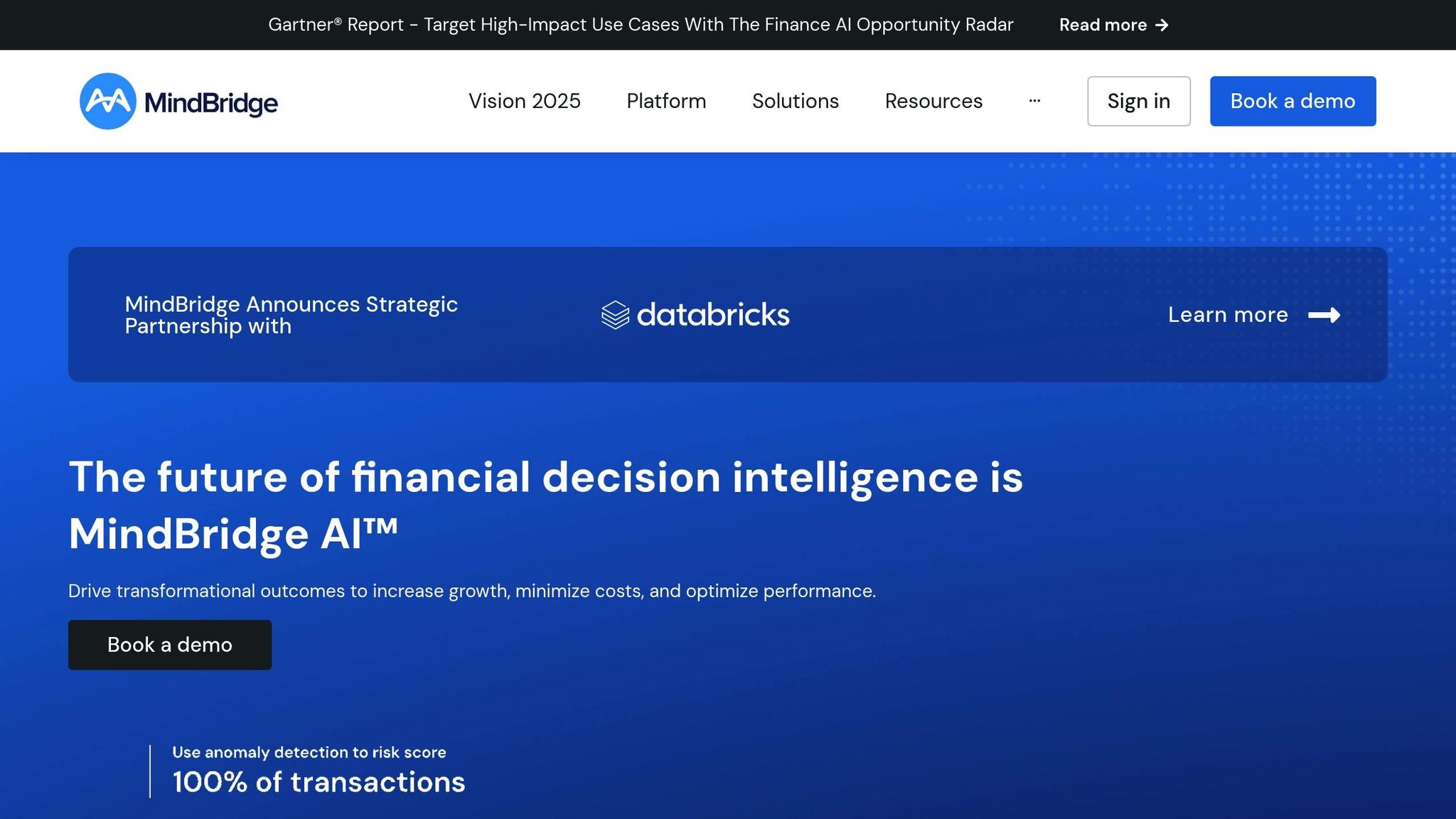
MindBridge is designed to uncover anomalies, inefficiencies, and fraud through AI-powered detection. It assigns risk scores to help businesses prioritize investigations and allocate resources effectively.
The platform integrates with tools like Microsoft Fabric, streamlining audit and compliance processes to meet U.S. regulatory standards. MindBridge delivers enterprise-level anomaly detection without requiring heavy infrastructure investments. Its automated reporting also simplifies compliance documentation, saving time and effort for finance teams.
HighRadius: Smarter Credit Risk Management
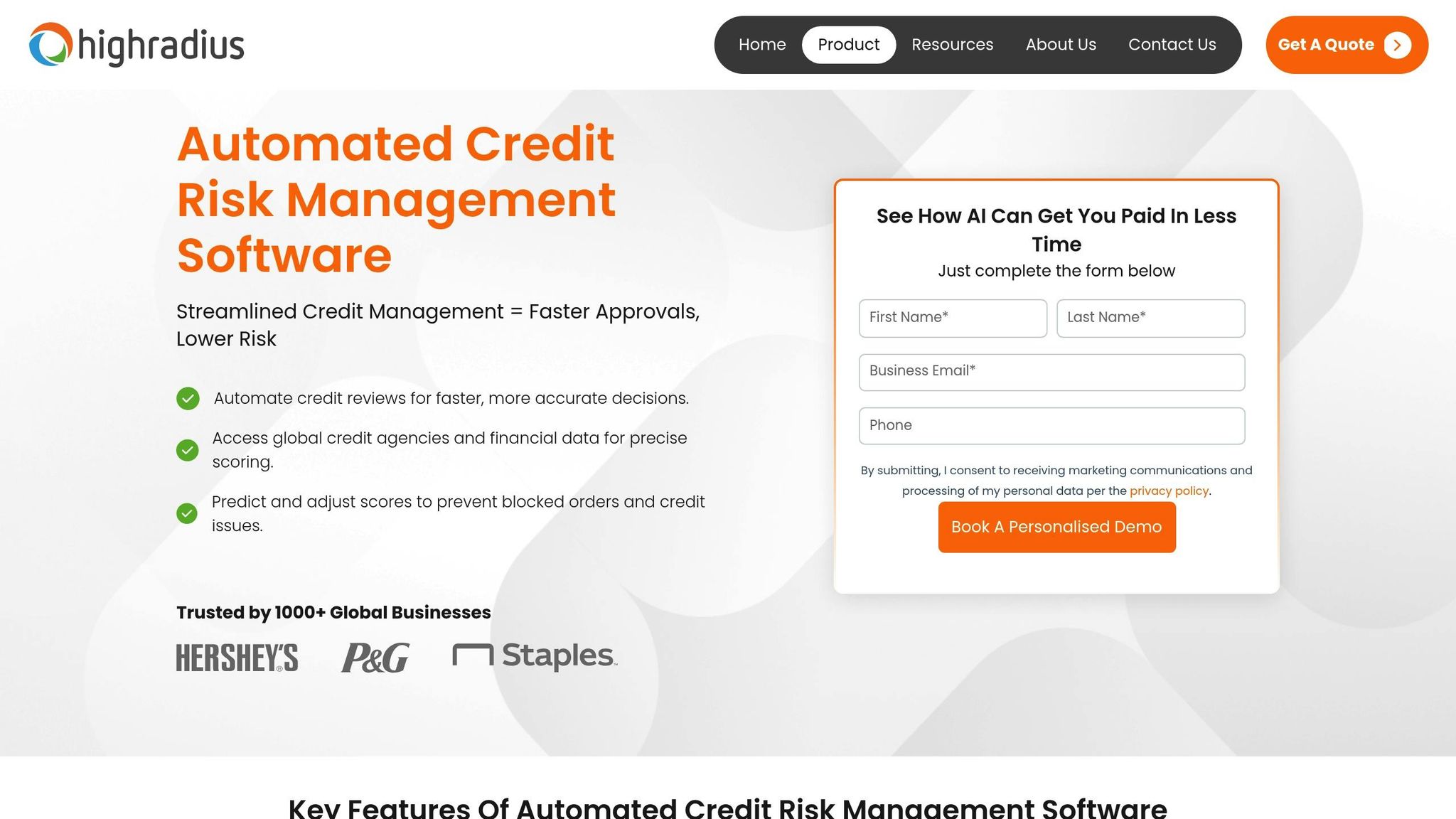
HighRadius uses AI to automate credit risk assessments and streamline credit limit reviews, improving the accuracy of credit decisions. By connecting with ERP systems commonly used in the U.S., it offers real-time analytics and automated workflows that reduce manual input and optimize cash flow management.
As businesses grow, HighRadius’s scalable solutions ensure that risk management capabilities evolve alongside their needs. This makes it a reliable choice for companies looking to enhance their credit management processes.
For businesses seeking expert guidance on implementing these tools, services like Phoenix Strategy Group can help. Their advisors specialize in financial strategy, data engineering, and technology integration, ensuring that AI tools align with both operational requirements and long-term goals.
Feature and Pricing Comparison of AI Tools
AI tools aimed at risk assessment and fraud prevention often have different strengths, features, and pricing models. Here's a closer look at how some of the leading options compare.
Comparison Table
| Tool | Primary Focus | Key Features | Pricing | Best For | G2 Rating |
|---|---|---|---|---|---|
| Finbox | Financial Data Analysis | Over 1,000 customizable metrics, real-time analytics, dashboards, integration | Contact for pricing | Investment decisions, benchmarking, risk evaluations | Not available |
| Sift | Fraud Detection | Real-time transaction analysis, behavior monitoring, payment protection | Free demo, pricing on request | E-commerce fraud prevention, payment security | 4.7/5 |
| MindBridge | Anomaly Detection | Full transaction analysis, AI risk scoring, automated reporting | Contact for pricing | Audits, compliance, fraud detection | Not available |
| HighRadius | Credit Risk Management | Automated credit assessments, ERP integration, real-time analytics | Contact for pricing | Credit reviews, cash flow optimization | Not available |
Each tool caters to specific needs, and pricing often reflects their enterprise orientation. Key factors like data quality, integration capabilities, and scalability play a significant role in determining their effectiveness.
Sift's real-time fraud detection relies heavily on high-quality input data to reduce false alerts and ensure accuracy. Meanwhile, MindBridge's ability to analyze every transaction uncovers anomalies and risks, making it ideal for organizations handling complex financial data. Integration is another key differentiator - HighRadius focuses on ERP connectivity, while Sift integrates seamlessly with U.S. financial platforms and CRM systems, offering flexibility for various setups.
Scalability is crucial for businesses planning to grow. HighRadius provides solutions that evolve alongside expanding companies, while Finbox's vast array of metrics supports increasingly intricate analyses. For newcomers to AI-driven risk management, Sift's intuitive interface reduces the learning curve, making it easier to get started without extensive training.
For organizations seeking to incorporate these tools into their financial workflows, expert guidance can make all the difference. Firms like Phoenix Strategy Group (https://phoenixstrategy.group) can help tailor AI solutions to your immediate requirements and align them with long-term goals.
Challenges in Implementing AI for Financial Risk Management
AI tools bring impressive capabilities to financial risk management, but putting them into practice comes with its own set of hurdles. Organizations often grapple with data quality issues and regulatory compliance requirements, both of which can derail even the most promising AI projects.
Data Quality and Integration
One of the biggest challenges is poor data quality. Incomplete or outdated financial records can wreak havoc on AI systems, leading to inaccurate results and false positives that disrupt operations. Without clean and reliable data, even the most advanced AI tools can't perform effectively.
The problem gets worse when dealing with legacy system integration. Many companies still rely on outdated ERP or CRM systems that use incompatible data formats, making it tough to connect with modern AI tools. For example, while platforms like MindBridge work seamlessly with systems such as Microsoft Fabric and Salesforce, businesses with older infrastructure face steep migration costs and technical headaches.
"Hire PSG if you want to make your life easier and have accurate data." - Michael Mancuso, CIO, New Law Business Model
Another issue is siloed financial and revenue teams, which often operate independently. This disconnect results in fragmented datasets, making it nearly impossible for AI tools to develop a unified view of a company’s performance. Without this unified view, creating accurate risk assessments or forecasts becomes a major challenge.
To tackle these issues, organizations can adopt strategies like data standardization and middleware solutions to bridge the gaps between systems. Specialized advisory firms, such as Phoenix Strategy Group (https://phoenixstrategy.group), can help streamline this process. Their data engineering services, including ETL pipelines and data warehousing, prepare businesses for AI adoption, ensuring data quality and consistency. Fixing these foundational data issues is critical before moving on to regulatory challenges.
Regulatory and Compliance Challenges
Once data issues are addressed, the next hurdle is regulatory compliance. Financial institutions must navigate strict frameworks like the Dodd-Frank Act and GDPR, which demand transparency, data privacy, and auditability for AI-driven decisions. Falling short of these standards can result in hefty penalties.
The "black box" problem adds another layer of complexity. Many AI models, especially those using deep learning, function in ways that are hard to explain. If an AI system flags a transaction as risky or denies credit, organizations must provide clear, documented reasoning behind these decisions to satisfy regulators and stakeholders.
To build trust and meet compliance demands, model transparency is crucial. Modern AI platforms address this by offering detailed explanations of predictions and decision-making processes. These platforms also create audit trails, showing exactly how conclusions were reached - making regulatory reviews much smoother.
Adding to the challenge, financial regulations are constantly evolving. AI systems must keep up with these changes to remain compliant. Advanced tools now use natural language processing to track regulatory updates and analyze market sentiment, helping businesses adjust their risk strategies in real time.
Meeting these compliance demands requires investments in training, system upgrades, and monitoring tools. While these steps can be costly, the price of non-compliance - fines and reputational damage - is usually far higher.
Explainable AI (XAI) frameworks offer a practical solution to these transparency challenges. These systems provide clear documentation of how AI models process data and make decisions, ensuring the audit trails regulators expect. Companies should prioritize AI platforms that emphasize explainability and maintain detailed decision logs to stay compliant and build trust with stakeholders.
sbb-itb-e766981
Future Trends in AI for Financial Risk Management
AI is reshaping how organizations detect, evaluate, and manage financial risks. Technologies like Graph Neural Networks (GNNs) and Reinforcement Learning (RL) are at the forefront, offering advanced solutions that surpass traditional risk models.
Graph Neural Networks are changing the game in systemic risk analysis by mapping the intricate web of connections between financial entities. By analyzing inter-institutional relationships, GNNs can uncover hidden vulnerabilities that might otherwise go unnoticed until a crisis unfolds.
Consider the interconnectedness of financial institutions through loans, derivatives, and trading relationships. GNNs can simulate how distress might ripple through these networks, identifying which institutions are most vulnerable and how quickly problems could escalate. This makes them incredibly useful for stress testing and scenario analysis, where understanding systemic impacts is critical.
Reinforcement Learning is another transformative tool, enabling AI systems to adapt to ever-changing market conditions. Unlike static models, RL algorithms learn on the go, dynamically adjusting portfolio allocations and risk exposures in real time. This adaptability allows for more responsive and precise risk management. Together, GNNs and RL are setting the stage for highly accurate digital simulations of financial networks.
These advancements are already proving their value. For instance, platforms like Ayasdi have demonstrated how digital twins of trading operations and networks can improve risk strategies by 30%. These virtual models let institutions test various scenarios and strategies without putting actual capital at risk.
Natural Language Processing (NLP) is also evolving, moving beyond basic sentiment analysis to deliver nuanced qualitative risk assessments. Tools like FinChatGPT analyze unstructured data, such as regulatory filings and social media, to detect early warning signs in the market. BlackRock's use of NLP has reportedly reduced risk by 20% while enhancing compliance efforts by 30%.
Cloud-based platforms are making these advanced AI tools accessible to smaller financial institutions. Previously, only large banks with extensive IT budgets could afford sophisticated risk management systems. Now, startups and mid-sized firms can leverage enterprise-grade capabilities at a fraction of the cost, leveling the playing field and enabling broader adoption of robust risk management frameworks.
In addition, agent-based modeling is using swarm intelligence to simulate financial systems, offering granular, real-time insights into risk dynamics.
Regulatory concerns are also shaping AI development. Rising scrutiny has pushed for tools with built-in transparency and clear audit trails, addressing the "black box" problem that has historically hindered AI adoption in tightly regulated sectors.
Looking ahead, the AI risk management market is projected to hit $38.6 billion by 2025, driven by the demand for adaptive, data-driven decision-making. Emerging technologies like autonomous agents for continuous monitoring and federated learning for privacy-focused analytics will further enhance capabilities while addressing data security challenges.
To fully leverage these trends, organizations need strong data foundations. Companies like Phoenix Strategy Group (https://phoenixstrategy.group) specialize in data engineering, ETL processes, and warehousing, helping businesses seamlessly integrate advanced AI tools into their financial strategies. Their expertise positions growth-stage firms to adopt next-generation risk management solutions effectively.
The future of financial risk management lies in these adaptive AI systems, capable of processing vast amounts of structured and unstructured data to deliver real-time insights. Companies investing in these technologies will be better equipped to navigate the increasingly complex financial landscape.
Conclusion: Choosing the Right AI Tools for Financial Risk Management
Selecting the right AI tools starts with understanding your unique risk profile and growth goals. The tools we've discussed highlight how AI can revolutionize fraud detection, credit risk assessment, and compliance automation. But the real question is: how well do these tools align with your specific needs?
Start by evaluating your risk profile and operational demands. Focus on tools that offer real-time analytics, integrate smoothly with your existing systems, and provide transparent models to ensure compliance and efficiency. For example, Sift's strong user satisfaction underscores the value of real-time analytics in boosting operational efficiency. Similarly, platforms like MindBridge, which integrates with Microsoft Fabric, or HighRadius, known for its ERP system compatibility, showcase how seamless integration can deliver unified risk profiles and actionable insights.
Budget is another key factor. Costs can vary widely, especially for enterprise-level platforms that often require custom pricing. When evaluating options, consider your organization's size and the features you need. Investing in AI-driven risk management solutions now can help your business stay ahead in an increasingly complex financial environment.
For growing companies exploring these technologies, working with advisory services can make adoption smoother and more effective. For instance, Phoenix Strategy Group specializes in aligning technology and data with financial strategies. They help businesses tailor AI adoption to support scaling, securing funding, and preparing for exit strategies. You can learn more about their services at Phoenix Strategy Group.
FAQs
How do AI tools like Finbox and Sift work with financial systems to improve risk management?
AI tools like Finbox and Sift are built to work effortlessly with existing financial systems, simplifying operations and improving how risks are managed. Using advanced algorithms and machine learning, these tools can process massive amounts of financial data, spot patterns, and highlight potential risks as they happen.
When integrated with your financial software, they can handle tasks like fraud detection, credit risk evaluation, and compliance checks automatically. This cuts down on manual effort while delivering precise, up-to-date insights, empowering businesses to make smarter decisions and address risks more efficiently.
What challenges do businesses face when adopting AI for financial risk management, and how can they address them?
Implementing AI in financial risk management comes with its fair share of challenges. Issues like unreliable or incomplete data, steep upfront costs, and the need for specialized skills can make the process daunting. For instance, poor-quality data can limit AI's ability to deliver accurate insights, while the expense of new technology and training programs can strain budgets. On top of that, integrating AI tools into existing systems or workflows often proves to be a complex task.
To address these hurdles, businesses should prioritize ensuring data is accurate and complete, allocate resources to train employees and build in-house expertise, and opt for scalable AI solutions tailored to their specific requirements. Collaborating with seasoned advisors, such as Phoenix Strategy Group, can be a smart move. Their expertise can help companies navigate these challenges and unlock the full potential of AI in financial risk management.
How do technologies like Graph Neural Networks and Explainable AI enhance financial risk management tools?
Technologies like Graph Neural Networks (GNNs) and Explainable AI (XAI) are reshaping how financial institutions manage risk by making their tools smarter and easier to understand. GNNs are particularly effective at analyzing intricate relationships, such as those in credit networks or fraud detection systems. This allows for more precise risk predictions by uncovering hidden patterns within interconnected financial data.
At the same time, XAI plays a critical role in ensuring these sophisticated tools remain transparent. By offering clear, human-readable explanations for their decisions, XAI helps build trust among stakeholders and ensures compliance with regulations. Together, these technologies enable businesses to make smarter, data-backed decisions while keeping risks under control.


